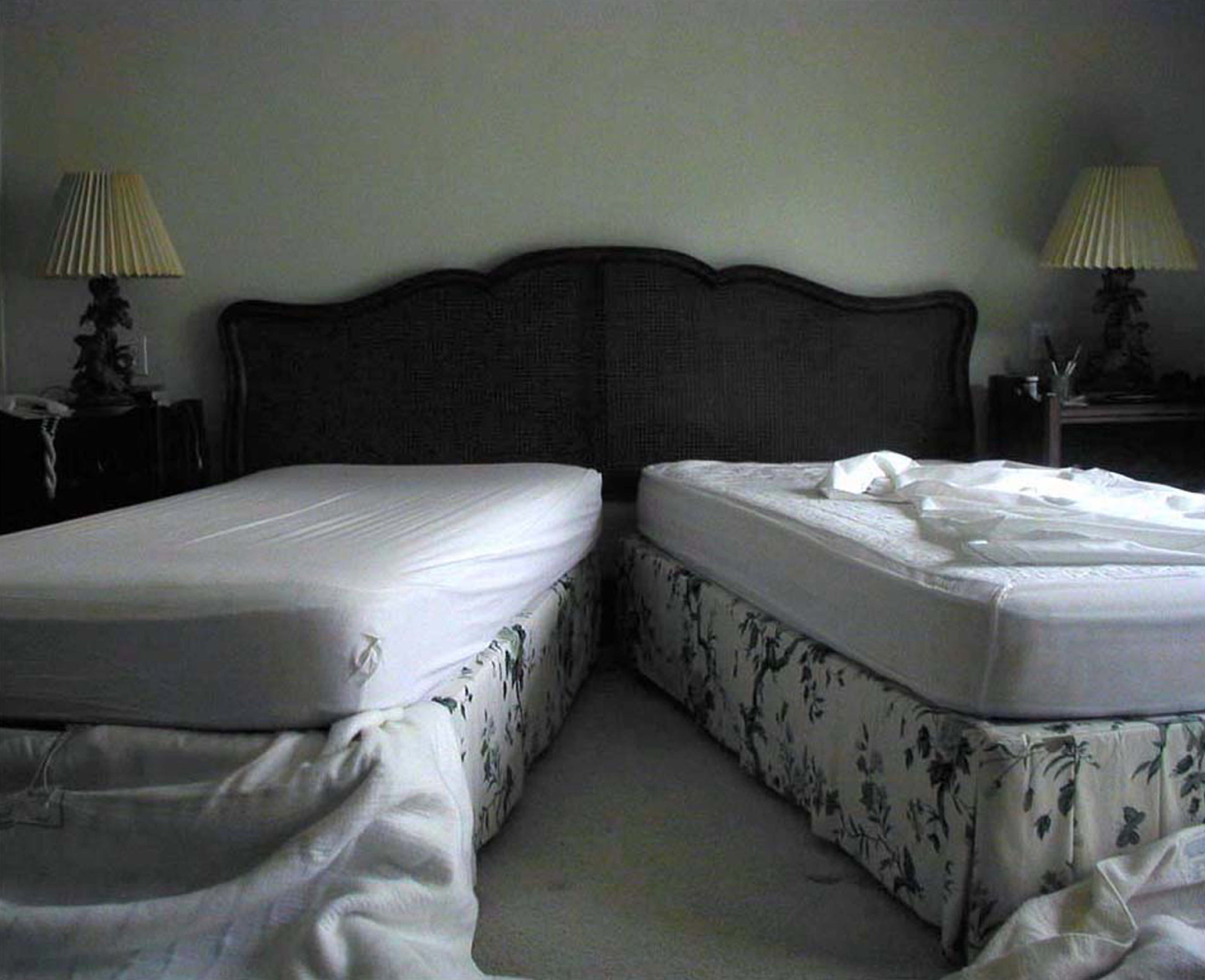Art Review: “Sweet Dreams” and “Opposing the Opposition”
The Soap Factorys last show of this year (its getting cold soon . . . show ends Oct. 26) resounds with the industrial buzz of busy minds, devices that spin out endless ropes of analogy and inference. Are any of these useful?


Could you use them for anything but tying yourself up in knots? Well, maybe a few you could, but only if you pry them loose from their curatorial settings . . .
Jo del Pesco, curating the Project Rooms and Video Rooms, is the worst offender on this score. His essay, which I won’t run here in its entirety though I’m tempted to, has things like this in it: “My mind then jumps to artist/musician John Cage, who unfortunately never collaborated with Run DMC (imagine a John Cage score performed by Darren “Buff” Robinson—the Human Beat Box). Cage, who was dismissing of value judgments, became interested in the flexibility of beauty (ideas of good and bad), to the extent that something considered repulsive could be recoded into an experience of attraction.”
Okay, Cage is used more often than Jesus Christ as a figure that allows the speaker to do whatever the hell they might have in mind. Cage wasn’t a guy who just didn’t want anyone to judge anything. His work was specific, grounded, and had particular ideas in mind that weren’t nearly as sweeping as del Pesco would want him to be. He enabled people to begin to hear sound with the kind of attention they usually devoted to music. He probably wouldn’t have been real interested in hip hop.
Key to the quote? “My mind then jumps . . .” Right, and mine isn’t following. What’s happening here is a curator who’s got a headlock on a bunch of ideas and wants to force them into the same room because it’s the one he’s in. That’s why we’ve got Sue Kosmalski’s mildly interesting but ultimately unrevealing altered video of stock boxing footage (think of a slightly hipper Ken Burns—but just as pious) cheek by jowl with Andrew Jeffrey Wright’s and Clare Rojas’s very funny and pitch perfect snotty scribbling on Fashion Icons from magazines, with Bruce Tapola’s amusing but largely empty baroque stylings next to the truly revolting foam concoctions of Meaghan Harrison (subbing for the collective Law Office, who I guess couldn’t make it).
Each of these artists’ works could maybe be appealing in a context that was better suited to them, but to say that these works are all addressing the question, “opposing the opposition” (and what the hell does that mean?!) hurts each of the participants. They’re all very disparate. Let’em be so.
“Sweet Dreams,” the other curated collection in the show, was put together by Franklin Sirmans, whose curatorial statement was a lot smoother but similarly cryptic. These works are by artists from all over the world—Japan, Georgia, New York, etc. Some are beautifully made.
Asuka Ohsawa, for instance, presents elegant, giggly, profound combos of his cartoon/anime-inflected longlegged duck figure with traditional but “posterized” ink-and-brush Japanese subjects, such as a brilliant clawed elephant or a dragon-ornamented kite.
“Balance,” Eric Winesett’s pair of video installations with sound, was probably the most stirring piece in the “Sweet Dreams” collection: simple, concerned with a single fact and its resonances. A small TV screen showed an image of an egg, which a hand is constantly trying to coax into balance on its end. As, each time, the egg tips and rolls, a thunderous sound, like lead bowling balls rolling under the floor, marks the egg’s movement. The vibrations lead up into the four chairs that one sits in to view the egg. Facing this, another larger screen shows a man with asymmetrically truncated arms trying to balance on a teeterboard. He’s impassive, focused on the problem of maintaining an impossible balance in a world of motion.
Other “Sweet Dreams” artists were concerned with sex, but unfortunately for those of us who like it, in distinctly dystopian terms. Yun Bai presents creepy little resin-encased bouquets of pink flowers made of clipped-out genitalia and breasts from porn mags embellished with crudely lettered obscenities such as “dirty old slags live”; Laura Carton has big glossy C-prints, images of bedrooms taken from porn sites from which all the people have been erased. Their provenance as pornography would never be guessed, except for their titles, which consist of the URLs from which they were taken.
Jaye Rhee’s “Cherry Blossoms,” an onieric dual video field of mysteriously falling petals (twitching down onto the surface unnaturally, swimming in a field of sound, koto strings and clicks) was lovely; there were other things that had presence and an air of life as well.
Once again, though, as so often, the great mass and atmosphere of the building itself trumped anything put into it. When will the Soap Factory find again a curator who can make the art match the potential of the building?